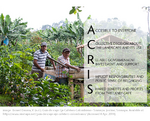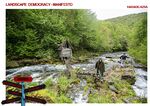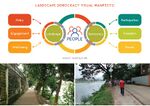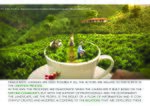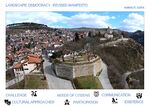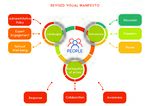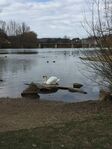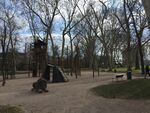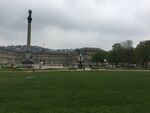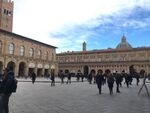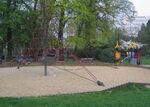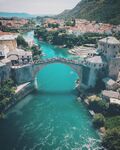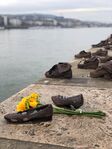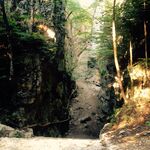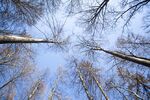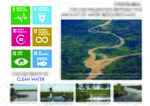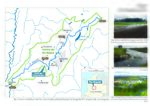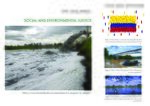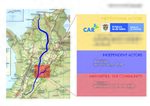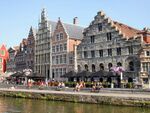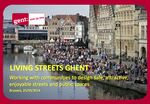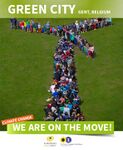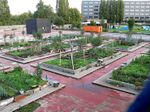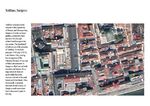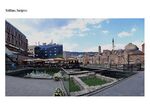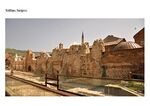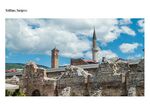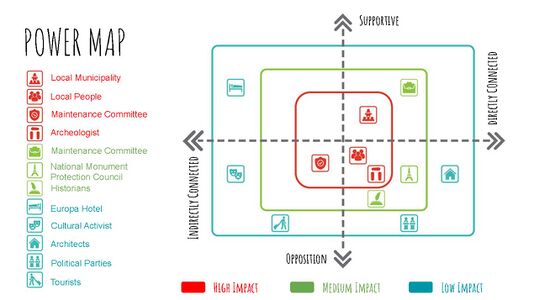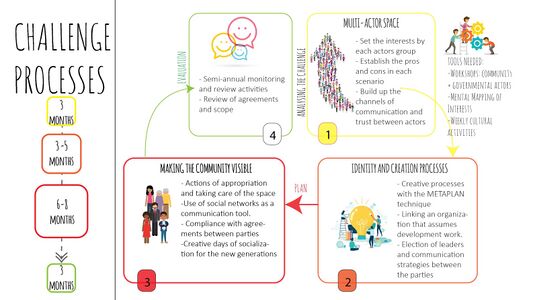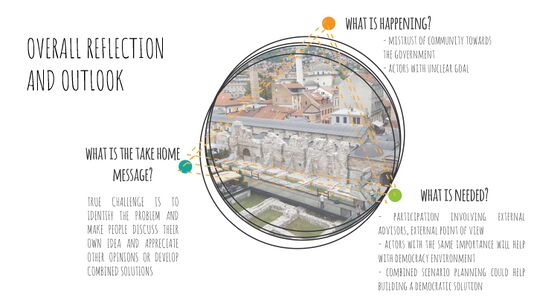LED Online Seminar 2019 - Working Group 3: Difference between revisions
Azra.haracic (talk | contribs) |
|||
| (72 intermediate revisions by 5 users not shown) | |||
| Line 33: | Line 33: | ||
Burckhardt, Lucius (1979): Why is landscape beautiful? (Melissa) | Burckhardt, Lucius (1979): Why is landscape beautiful? (Melissa) | ||
Sieverts, Thomas (2003): Cities without cities. An interpretation of the Zwischenstadt. (Azra) | |||
'''B: Concepts of Participation''' | '''B: Concepts of Participation''' | ||
Burckhardt, Lucius (1974): Who plans the planning? in: Fezer/Schmitz (Eds.) Rethinking Man-made Environments (2012) (Azra) | |||
'''C: Community and Identity''' | '''C: Community and Identity''' | ||
| Line 52: | Line 55: | ||
Smith, Nicola Dawn(2012): Design Charrette: A Vehicle for Consultation or Collaboration (Melissa) | Smith, Nicola Dawn(2012): Design Charrette: A Vehicle for Consultation or Collaboration (Melissa) | ||
Kot, Douglas and Ruggeri, Deni: Westport Case Study (Azra) | |||
'''E: Communicating a Vision''' | '''E: Communicating a Vision''' | ||
| Line 63: | Line 68: | ||
'''Concepts and definitions''' | '''Concepts and definitions''' | ||
'''Author 1: | '''Author 1: Michel Meus''' | ||
*.... | * ''' LIFE, LIBERTY AND THE PURSUIT OF SUSTAINABLE HAPPINESS:'''The ideas of Randolf T. Hester are mainly saying that to get sustainable cities and live happily, changements need to be done, not only from a physical and scientific point of view, but also in the values and the way of thinking of the inhabitants. For that education and participation are key solutions to reach the goal of a sustainable city and happy community. A few small interventions can be done to make these changments occur, like creating places that touche more the feelings and the heart of the people (sacred places for example), creating places where people can communicate and share experience (by caring and solving a common problem for example) and many others. Following the author, ideas of personnal fulfillment has to be changed to allow people find a proper way to communicates and participate to the achievement of a sustainable and happy city/community. | ||
*..... | * '''HOW TO STUDY LANDSCAPE ?''' For J.B. Jackson, we have to rethink today’s way of analysing the landscape. For him, we should analyse more the way traditionnal landscape changed by looking at what is new and why it changed like that, rather than analyse how some caracteristics disappeared. He also points the roads as a way to attract buildings and redefining the notion of property but also destroying small entities. For him, the « old » landscape was more conservative and was not taking into account the future of the inhabitants and the possibility of changements as well as taking into account the spirituality of the place, which should be more present following him. | ||
*... | *'''CINEMATIC LANDSCAPES'''The article talks about the power of cinematic landscape and the use of landscape in general as a way to reach people’s heart about gender, economic and environmental problems that can happens accross the world. In this case, the movie « Beasts of the Southern Wild » depicts the environmental catastrophy in Louisiana through a process of « slow violence » through the eyes of a child. This cinematic landscape can highlight problems accross the world and point them so people can start finding a way to change them. | ||
'''Author 2: Melissa Zapata''' | '''Author 2: Melissa Zapata''' | ||
*'''DISRUPTION & LANDSCAPE:''' We all have a preconceived idea of landscape with an artistic palette and a charming place. However, this is a personal concept so, what make us all perceived the beauty in the landscape?. Probably is the use of the landscape itself what make us identy with the place. Is the disruption or interaction with a place what let us identify the "hiden rules" common to all of us | *'''DISRUPTION & LANDSCAPE:''' We all have a preconceived idea of landscape with an artistic palette and a charming place. However, this is a personal concept so, what make us all perceived the beauty in the landscape?. Probably is the use of the landscape itself what make us identy with the place. Is the disruption or interaction with a place what let us identify the "hiden rules" common to all of us | ||
*'''SELF-KNOWLEDGE & LANDSCAPE LITERACY :'''As long as the community is engage to know about their past and their history in terms of landscape, better are the chances for them to face new, efficient and successful planning for their future. Thereby, having the capacity of reading their landscape though the academic partnership, the Mill Creek neighboors, were able to create extraordinary proposals away of the sense of guilt and resignation | *'''SELF-KNOWLEDGE & LANDSCAPE LITERACY :'''As long as the community is engage to know about their past and their history in terms of landscape, better are the chances for them to face new, efficient and successful planning for their future. Thereby, having the capacity of reading their landscape though the academic partnership, the Mill Creek neighboors, were able to create extraordinary proposals away of the sense of guilt and resignation | ||
*... | *'''PARTICIPATION DESIGN PROCESS:''' With the aim of co-create, in terms of design, a way of trasmit knowledge and let the people be involved in the proccess of art and creation, is accesible in the most easy and effective way.. The ''Charrete'' design is mostly about an intensive period of time of collaboration work and efficiency where the work became a doble way experience of collaborators and consultants. Therefore, the democracy in the design and in the people's neccesities is a balance that garantee the long term work of the projects as well as its success | ||
'''Author 3: | '''Author 3: Azra Haracic ''' | ||
*.... | *'''An interpretation of the Zwischenstadt: ''' The concept of the Thomas Sieverts chapter 'An interpretation of the Zwischenstadt' is the idea of Zwischenstadt itself and the ways of changing it to something new, with new perspective and approaches. He is trying to explain the most important newly appeared questions about interpretation of intermediate city or city in a change with growth. Also, in his opinion, very important perspective is from cultural and political dissolution of the city which has affected the whole idea of the Zwischenstadt, actually the fact that environment they are living in has destroyed both perspectives. He refers to Kevin Lynch's mental mapping and how it is strong and different approach for the urbanized countryside, Zwischendtadt. His critical opinion of the city is, in my opinion, very much objective and realistic and different point of view of criticizing an idea of industrial periphery. | ||
*..... | *'''Who plans the planning? : ''' The concept of this reading is mainly about who really plans the planning and the way they do it. Important aspect of the planning is the decision-making part which can not always be controlled or done in the best possible way, because there are more people involved with different backgrounds (professions) and usually with different goals/intentions. It is really important for architect or urban planner to be professional and not attached in politics in order to have the best possible intention as well as outcome. Human Relations method is a good way to overcome some problems that might appear in collective decision making. Sometimes, planners are designing with their intuition and there is also one very important factor while planning: experience. Planners need experience in order to be able to create and understand the needs of specific community and create a place to be suitable for all useres. | ||
*....... | *'''How One Small Community Shaped Its Future: ''' The concept of the Case study on Crafting Westport is about the problems in economical situation and the employment problems they were faced with. The limited opportunities for job in this place made the population be involved in agriculture and mostly health care services. Anyway, the history of this city is pretty important for the California and the was a good enough reason for the project like this. Part of this process what Listening project which was a background research on the community and the quality of the life inhabitants actually have. Outcome of the whole project (goal) to improve their life and quality of it, specially the economic situation they were at the time. As they refer to community as 'family' it was clear the size of the community and the need for new residents as well as the main functioning buildings in the city. Landscape students from Berkeley were part of the project and process of developing the new master plan for Westport with priority needs for community which inhabitants pointed out in the Listening Project. | ||
'''Author 4: Shaurav Paul | '''Author 4: Shaurav Paul | ||
*'''MENTAL IMAGE:''' The imageability or the appearance of any city does not fully rely on its design, physical condition, workability or special organization. The inhabitants, users or the outsiders make an environmental image of the city in their mind and navigate there by 5 (five) physical characteristics. Those are Paths (way of movement), Edges (Physical or mental boundary to difference with the surrounding’s boundary), Districts (a piece of cake in the whole city to remember the identity), Nodes (Strategic points of connections, activities or transitions) and Landmarks (external points of reference, which dominates the usual city structures). Planners or designers nowadays consider those factors while building or rebuilding a city for the look of the city. -''Lynch, Kevin. (1960): The Image of the City, Cambridge, Mass.: MIT Press'' | *'''MENTAL IMAGE:''' The imageability or the appearance of any city does not fully rely on its design, physical condition, workability or special organization. The inhabitants, users or the outsiders make an environmental image of the city in their mind and navigate there by 5 (five) physical characteristics. Those are Paths (way of movement), Edges (Physical or mental boundary to difference with the surrounding’s boundary), Districts (a piece of cake in the whole city to remember the identity), Nodes (Strategic points of connections, activities or transitions) and Landmarks (external points of reference, which dominates the usual city structures). Planners or designers nowadays consider those factors while building or rebuilding a city for the look of the city. -''Lynch, Kevin. (1960): The Image of the City, Cambridge, Mass.: MIT Press'' | ||
*... | *'''REPRESENTATIVE REPRESENTATION:''' Designing a space in the participatory method is not an equal task like the normal design process. The designers use some unique and creative methods to bring out the idea from local people to implement this on the design. Rather than asking their direct opinions, designers can follow 5 steps to ensure the participatory design process with the citizens. Representing people, enhancing their knowledge, co-authoring design with them, encouraging people to represent themselves and perceiving the long term value of the design process can be the best collaborative process to figure out the "Representative Representation”- ''Hester, Randolph: Democratic Drawing - Techniques for Participatory Design'' | ||
*.... | *'''RESILIENCY:''' To achieve the goal of Ecological Democracy in the term of city design, resiliency is the middle factor with enabling and impelling. The present city planners and designers are overlooking the concept of an ecologically sustainable city in means of designing posh, lucrative and technological city. This poor city design is creating “lost community” and nurturing a sense of community is not a prime goal now. But if we really want to make a city, where people can live with social, ecological and communal balance, we have to input the equation of creating ecological democracy in city planning. When a city and its landscape are ready to stand with short term disasters besides of creating a social connection (enabling) and a place of personal feeling (impelling), the city must stand out ahead rather than the so-called “Designed City” - ''Hester, Randolph (2006): Design for Ecological Democracy'' | ||
=== Step 5: Reflection === | === Step 5: Reflection === | ||
| Line 92: | Line 97: | ||
<gallery caption=" " widths="150px" heights="150px" perrow="5"> | <gallery caption=" " widths="150px" heights="150px" perrow="5"> | ||
Image: | Image:Last Manifesto-80.jpg|Melissa's updated manifesto | ||
Image: | Image:Revised Manifesto Michel Meus.JPG|Michel's updated manifesto | ||
Image: | Image:Revised manifesto Azra Haracic.jpg|Azra's updated manifesto | ||
Image: | Image:Revised Manifesto Shaurav Paul.jpg|Author's updated manifesto | ||
</gallery> | </gallery> | ||
| Line 109: | Line 114: | ||
</gallery> | </gallery> | ||
=== Landscape Symbols Author 2: | === Landscape Symbols Author 2: Michel === | ||
<gallery caption=" " widths="150px" heights="150px" perrow="5"> | <gallery caption=" " widths="150px" heights="150px" perrow="5"> | ||
| Line 128: | Line 133: | ||
---- | ---- | ||
=== Landscape Symbols Author 3: Azra Haracic === | === Landscape Symbols Author 3: Azra Haracic === | ||
<gallery caption=" " widths="150px" heights="150px" perrow="5"> | <gallery caption=" " widths="150px" heights="150px" perrow="5"> | ||
Image:First symbol Azra.jpg | | Image:First symbol Azra.jpg | My first symbol is the Old Bridge in my country, Bosnia and Herzegovina, Mostar. It is the symbol of connection for two parts of the city ( both geographical and religious parts ) and it was destroyed in the war, November 1993, so people that are attacking cant cross it. After the War it was rebuilt, and it is very important for the history of Bosnia. Also, it is protected by UNESCO as a World Heritage site. For me, it is the symbol in landscape from very important period i this country and it shows the purpose of peoples democracy and their connection. In this way, some religious barriers and obstacles were a good intention for overcoming them. | ||
[[File:First symbol Azra.jpg ]] | [[File:First symbol Azra.jpg ]] | ||
Image:Second symbol Azra.jpg | The Shoes on the Danube Bank is a memorial in Budapest | Image:Second symbol Azra.jpg | My second symbol is located in Budapest, The Shoes on the Danube Bank, important for all the Jews around the world and reminder of how they were fighting to get true for that crime. It is a memorial in Budapest on the place where they were ordered to take off their shoes, and were shot at the edge of the water so that their bodies fell into the river and were carried away. This is representing their shoes left behind on the bank and I think this is a good way of symbol of democracy in landscape and big reminder for the crime which should never be repeated again. You can feel the atmosphere and sadness of the place, but still people took the courage to make it a statement through democracy and make it a symbol. | ||
[[File:Second symbol Azra.jpg ]] | [[File:Second symbol Azra.jpg ]] | ||
Image: Third symbol Azra.jpg |Ajvatovica is the largest Islamic traditional, religious and cultural event in Europe | Image: Third symbol Azra.jpg | My third symbol is also in Bosnia, located near Prusac, and it is also historic sign related to Muslim people with the story behind it, how the rock opened and separated in two parts so the city has water. Ajvatovica is the largest Islamic traditional, religious and cultural event in Europe. It was named after Ajvaz Dede (Grandfather Ajvaz), and for me, he and this symbol represents the sacrifice of one for greater good. Even after more then 500 years, people still go to the water spring itself to show their appreciation and I consider this as a very powerful symbol of a landscape. | ||
| Line 148: | Line 155: | ||
---- | ---- | ||
=== Landscape Symbols Author 4: Shaurav Paul === | === Landscape Symbols Author 4: Shaurav Paul === | ||
| Line 180: | Line 186: | ||
*Each group member will specify a landscape democracy challenge in his/her environment | *Each group member will specify a landscape democracy challenge in his/her environment | ||
=== | === SOCIAL AND ENVIRONMENTAL JUSTICE === | ||
<gallery caption=" | <gallery caption="The contradiction. Melissa Zapata" widths="150px" heights="150px" perrow="5"> | ||
Image: | Image:Melissa Challenge-02.jpg|This case is important because it represents one of the most problematic types of relationship between man and water. Here, is evidenced the utilitarian relationship of man with the most precious natural resource: water. This case develops in a specific context, however it is an example of what happens in many other parts of the world. This case has a great influence on the "Sustainable Development Goals" since it expresses the need for clean water and represents the greatest contradiction between the abundance of natural resources and the lack of good management of them. | ||
Image: | |||
Image: | Image:Challenges-02.jpg|The Bogotá river flows into the most important basin of Colombia: the Magdalena river. However, the care given to the basin is not adequate. The communities that live near the Bogotá river, especially those in the upper part of the basin, do not have a good resource management and pollute the water source from the beggining. The responsibles of the agricultural activities deposit fertilizer residues that are highly harmful to the river. Industries, despite the efforts of the authorities, pollute the basin; And, in the most forgotten areas of the river, remains of human waste, that have been deposited in the basin along the river, are evidenced. | ||
Image: | |||
Image:Melissa Challenge-03.jpg|The challenge here is to develop social and environmental justice for the sustainable development of the communities that live near the river and benefit from it. However, those involved in this challenge are not only the closest to the basin, but all Colombians; the communities of farmers and fishermen who find their livelihoods thanks to the river and the Colombians who feed on these resources | |||
Image:Melissa Challenge-04.jpg|Therefore, the actors involved vary from institutional actors who have power over the decisions and management of the river; independent actors who find economic benefits from the basin, big industries and big scale agriculture, specially potatoes and flowers; and actors who, despite having less influence and power over the decisions, are the main affected by changes in the river: the communities | |||
</gallery> | </gallery> | ||
'''Your references:''' | '''Your references:''' | ||
*... | *https://caracol.com.co/emisora/2016/06/09/bogota/1465506869_743244.html | ||
*... | *http://www.sdp.gov.co/sites/default/files/aproximacion_a_las_implicaciones_del_fallo_del_consejo_de_estado_sobre_el_rio_bogota.pdf | ||
=== Landscape Democracy Challenge 2 === | === Landscape Democracy Challenge 2 === | ||
<gallery caption=" | <gallery caption="Making Ghent a more sustainable city" widths="150px" heights="150px" perrow="5"> | ||
Image: | Image:Michel_Meus_challenge_1.jpg|The challenge here is to make Ghent (Belgium) a more sustainable city from different point of views (social, economic etc). Different particular subjects are being achieved, such as : Circulation plan (reducing car traffic), sustainable food projects, community initiatives (collective gardens…), sustainable fashionThe city is actually aiming to be the Green Capital of Europe in 2020. Committed to the environment, social and economic sustainability for themes such as green, climate, biodiversity, air quality, mobility, waste, energy, and so on. | ||
Image: | Image:Michel_Meus_challenge_2.jpg|As Ghent is one of the most touristic cities in Belgium, tourists should be warned more about how is the city developing and what is being made to make the city more livable. | ||
Image: | Image:Michel_Meus_challenge_3.jpg|By now, the situation in Ghent is already quite good. It is on a way of improvement but this situation is also to show how good it can be possible to improve the daily life of the inhabitants by making them participating. | ||
Image: | Image:Michel_Meus_challenge_4.jpg|who are the actors? In this case, the actors are politicians but mainly the inhabitants because they are participating more and more in the development of this kind of project, their opinion is taken into account which means that the inhabitants are participating in the growth of their city. | ||
</gallery> | </gallery> | ||
'''Your references:''' | '''Your references:''' | ||
*.. | *https://goodgoal.org/2018/03/30/5-reasons-why-ghent-is-one-of-europes-most-sustainable-cities/ | ||
*. | *https://europeangreens.eu/climatecampaign/ghent | ||
*https://urbact.eu/ghent | |||
=== Landscape Democracy Challenge 3 === | === Landscape Democracy Challenge 3 === | ||
<gallery caption=" | <gallery caption="Historic ruins Sarajevo" widths="150px" heights="150px" perrow="5"> | ||
Image: | Image:1...jpg|: Why this case? I think that this location of Tašlihan is already really important for the history of Sarajevo from Ottoman period and the idea of changing the main idea and function of this monument is a big of a challenge for landscape. | ||
Image: | Image:2 .jpg|: What is the issue? Issue of this Historic part is that the function and exsistence of this place they want to replace it and build something more profitrable. | ||
Image: | Image:3.jpg|: What is the conflict? In this case, conflict is that historically mattered monument would me replaced(that is a protected heritage) with shameful pot of gold for Sarajevo investors, hence casting the shadow on the true values of the Old Town. | ||
Image: | Image:4.jpg|: Who are the actors? Majority of the habitats and architectural experts have opinion that this area should remain protected heritage and not be damaged, but Municipality of Old Town Sarajevo has different plan and wants to proceed with their idea. | ||
</gallery> | </gallery> | ||
'''Your references:''' | '''Your references:''' | ||
*... | *https://www.trekearth.com | ||
*... | *https://commons.wikimedia.org | ||
*https://hiveminer.com | |||
=== Landscape Democracy Challenge 4_ Shaurav Paul === | |||
<gallery caption="Rampal Coal Power Plant beside Sundarban, World's Largest Mangrove Forest" widths="150px" heights="150px" perrow="5"> | |||
Image:Paul Democracy Challenge 1.jpg|'''Why this case:''' Rampal Coal Power station is a proposed 1320 MW power plant, which will be located in Khulna of Bangladesh. This is a joint project of India’s National Thermal Power Corporation and Bangladesh Power Development Board. The total site area is 1834 acres and it will be the largest power station in Bangladesh. The total budget is 1.5 billion US dollars and 70% of this fund will be the loan from the World Bank. But unfortunately, this site is located only 14 KM away from Sundarban, which is the UNESCO declared heritage site and World’s largest mangrove forest. This project will violate a lot of international environmental assessment guidelines. One of the major violations is overlooking the UNESCO’s precondition of making this type of project outside of 25 KM radius from the periphery of an ecologically sensitive area. | |||
Image:Paul Democracy Challenge 2.jpg|'''Issue:''' This power plant will import 4.72 million tons of coal per year. This huge amount of raw material will need about 59 ships and each of them will have the 80000-ton capacity. This ships will come through the Poshur River, which will pass 40 KM through this sensitive forest. In the statement of the environmentalists, those ships are not properly covered and they will emit a big amount of fly ash, coal dust and Sulphur to the forest. Besides, the plant will draw 219,600 cubic meters of water every day and discharge the wastewater to that river. This river is the major source of water to the surrounding community the animal of the forests depends highly on this. | |||
Image:Paul Democracy Challenge 3.jpg|'''Conflicts:''' There is a serious conflict between the Bangladesh Government and the people. The government rejects the allegations of bad impact of the coal-based power plant in the world’s largest mangrove forest. They have also claimed of importing high-quality coal, build a 275-meter high chimney and using new edge technology. But on the opposite side, the national High Court asked the government why the construction of the plant should not be declared illegal. The general people of Bangladesh vowed to resist the plant. Environmental experts have expressed concerns that the power plant will destroy this world’s environmental heritage. The citizens have protested against this power plant several times and they have also arrested some of the protestants. | |||
Image:Paul Democracy Challenge 4.jpg|'''Actors:''' The main actors of this challenges are Government, local people, environmentalists, local NGO and opposition political parties. The govt. is imposing this powerplant to the specific site. On the other hand, the environmentalists are expressing their concern about the de-forestation and mixing of toxic in air and water. The local people are protesting in the issue of environment and the huge quantity of financial loans, which will affect the amount of givable tax. The opposition political parties are using this issue to getting public sympathy for the political act. | |||
</gallery> | </gallery> | ||
'''Your references:''' | '''Your references:''' | ||
*... | *https://en.wikipedia.org/wiki/Rampal_Power_Station_(Proposed) | ||
*.. | *https://www.sourcewatch.org/index.php/Rampal_power_station | ||
*https://www.dhakatribune.com/bangladesh/2017/02/20/construction-rampal-power-plant-will-begin-next-month | |||
== Your Democratic Change Process == | |||
<gallery caption="Add Title" widths="600px" heights="300px" perrow="1"> | <gallery caption="Add Title" widths="600px" heights="300px" perrow="1"> | ||
Image: | Image:Group 3 Power Map.jpg|caption: Power Map | ||
Image: | Image:Group 3 Change Process.jpg|caption: Change Process | ||
Image: | Image:Group 3 Theory Findings.jpg|caption: Theory Findings | ||
Image: | Image:Group 3 Reflection.jpg|caption: Reflection | ||
</gallery> | </gallery> | ||
== Reflection == | |||
* | * Having clarity about the actors involved in a conflict allows us to have a better approach to the problem and therefore, to its solution | ||
* . | * Once the actors have been identified, classifying them by levels of power and influence help in creating objective strategies for the plan of change. However, this classification by itself does not guarantee the will to change by all the actors | ||
* . | * Change processes require always witty actions for each group of actors. In the case of our challenge, the most important thing was to regain trust in the relationship between government and community. | ||
Conclusion: | Conclusion: | ||
* | * Participation involving external advisors, external point of view | ||
* | * Actors with the same importance will help with democracy environment | ||
* | * Combined scenario planning could help building a democratic solution | ||
* '''TRUE CHALLENGE IS TO IDENTIFY THE PROBLEM AND MAKE PEOPLE DISCUSS THEIR OWN IDEA AND APPRECIATE OTHER OPINIONS OR DEVELOP COMBINED SOLUTIONS''' | |||
== Your references == | |||
* ... | * ... | ||
* ... | * ... | ||
Latest revision as of 14:28, 25 August 2019
--> Back to working group overview
Dear working group members. This is your group page and you will be completing the template gradually as we move through the seminar. Good luck and enjoy your collaboration!
Assignment 1 - Reading and Synthesizing Core Terminology
- You can read more details about this assignment here
- Readings are accessible via the resources page
Step 1: Your Landscape Democracy Manifestoes
Step 2: Define your readings
- Please add your readings selection for the terminology exercise before April 24:
A: Landscape and Democracy
Lynch, Kevin. (1960): The Image of the City (Shaurav Paul)
Jackson, John Brinckerhoff (1980): "By way of conclusion. How to study the landscape" (Michael)
Burckhardt, Lucius (1979): Why is landscape beautiful? (Melissa)
Sieverts, Thomas (2003): Cities without cities. An interpretation of the Zwischenstadt. (Azra)
B: Concepts of Participation
Burckhardt, Lucius (1974): Who plans the planning? in: Fezer/Schmitz (Eds.) Rethinking Man-made Environments (2012) (Azra)
C: Community and Identity
Hester, Randolph (2006): Design for Ecological Democracy (Shaurav Paul)
Welk Von Mossner, Alexa (2014): Cinematic Landscapes (Michael)
Spirn, Anne (2005): Restoring Mill Creek (Melissa)
D: Designing
Hester, Randolph: Democratic Drawing - Techniques for Participatory Design (Shaurav Paul)
Hester, Randolph: Life, Liberty and the Pursuit of Sustainable Happiness (Michael)
Smith, Nicola Dawn(2012): Design Charrette: A Vehicle for Consultation or Collaboration (Melissa)
Kot, Douglas and Ruggeri, Deni: Westport Case Study (Azra)
E: Communicating a Vision
Steps 3 and 4: Concepts Selection and definition
- Each group member selects three relevant concepts derived from his/her readings and synthesize them/publish them on the wiki by May 15, 2019
- Group members reflect within their groups and define their chosen concepts into a shared definition to be posted on the wiki by June 12, 2019.
- Other group members will be able to comment on the definitions until June 30, 2019
- Each group will also report on their process to come to a set of shared definitions of key landscape democracy concepts on the wiki documentation until July 12, 2019
Concepts and definitions
Author 1: Michel Meus
- LIFE, LIBERTY AND THE PURSUIT OF SUSTAINABLE HAPPINESS:The ideas of Randolf T. Hester are mainly saying that to get sustainable cities and live happily, changements need to be done, not only from a physical and scientific point of view, but also in the values and the way of thinking of the inhabitants. For that education and participation are key solutions to reach the goal of a sustainable city and happy community. A few small interventions can be done to make these changments occur, like creating places that touche more the feelings and the heart of the people (sacred places for example), creating places where people can communicate and share experience (by caring and solving a common problem for example) and many others. Following the author, ideas of personnal fulfillment has to be changed to allow people find a proper way to communicates and participate to the achievement of a sustainable and happy city/community.
- HOW TO STUDY LANDSCAPE ? For J.B. Jackson, we have to rethink today’s way of analysing the landscape. For him, we should analyse more the way traditionnal landscape changed by looking at what is new and why it changed like that, rather than analyse how some caracteristics disappeared. He also points the roads as a way to attract buildings and redefining the notion of property but also destroying small entities. For him, the « old » landscape was more conservative and was not taking into account the future of the inhabitants and the possibility of changements as well as taking into account the spirituality of the place, which should be more present following him.
- CINEMATIC LANDSCAPESThe article talks about the power of cinematic landscape and the use of landscape in general as a way to reach people’s heart about gender, economic and environmental problems that can happens accross the world. In this case, the movie « Beasts of the Southern Wild » depicts the environmental catastrophy in Louisiana through a process of « slow violence » through the eyes of a child. This cinematic landscape can highlight problems accross the world and point them so people can start finding a way to change them.
Author 2: Melissa Zapata
- DISRUPTION & LANDSCAPE: We all have a preconceived idea of landscape with an artistic palette and a charming place. However, this is a personal concept so, what make us all perceived the beauty in the landscape?. Probably is the use of the landscape itself what make us identy with the place. Is the disruption or interaction with a place what let us identify the "hiden rules" common to all of us
- SELF-KNOWLEDGE & LANDSCAPE LITERACY :As long as the community is engage to know about their past and their history in terms of landscape, better are the chances for them to face new, efficient and successful planning for their future. Thereby, having the capacity of reading their landscape though the academic partnership, the Mill Creek neighboors, were able to create extraordinary proposals away of the sense of guilt and resignation
- PARTICIPATION DESIGN PROCESS: With the aim of co-create, in terms of design, a way of trasmit knowledge and let the people be involved in the proccess of art and creation, is accesible in the most easy and effective way.. The Charrete design is mostly about an intensive period of time of collaboration work and efficiency where the work became a doble way experience of collaborators and consultants. Therefore, the democracy in the design and in the people's neccesities is a balance that garantee the long term work of the projects as well as its success
Author 3: Azra Haracic
- An interpretation of the Zwischenstadt: The concept of the Thomas Sieverts chapter 'An interpretation of the Zwischenstadt' is the idea of Zwischenstadt itself and the ways of changing it to something new, with new perspective and approaches. He is trying to explain the most important newly appeared questions about interpretation of intermediate city or city in a change with growth. Also, in his opinion, very important perspective is from cultural and political dissolution of the city which has affected the whole idea of the Zwischenstadt, actually the fact that environment they are living in has destroyed both perspectives. He refers to Kevin Lynch's mental mapping and how it is strong and different approach for the urbanized countryside, Zwischendtadt. His critical opinion of the city is, in my opinion, very much objective and realistic and different point of view of criticizing an idea of industrial periphery.
- Who plans the planning? : The concept of this reading is mainly about who really plans the planning and the way they do it. Important aspect of the planning is the decision-making part which can not always be controlled or done in the best possible way, because there are more people involved with different backgrounds (professions) and usually with different goals/intentions. It is really important for architect or urban planner to be professional and not attached in politics in order to have the best possible intention as well as outcome. Human Relations method is a good way to overcome some problems that might appear in collective decision making. Sometimes, planners are designing with their intuition and there is also one very important factor while planning: experience. Planners need experience in order to be able to create and understand the needs of specific community and create a place to be suitable for all useres.
- How One Small Community Shaped Its Future: The concept of the Case study on Crafting Westport is about the problems in economical situation and the employment problems they were faced with. The limited opportunities for job in this place made the population be involved in agriculture and mostly health care services. Anyway, the history of this city is pretty important for the California and the was a good enough reason for the project like this. Part of this process what Listening project which was a background research on the community and the quality of the life inhabitants actually have. Outcome of the whole project (goal) to improve their life and quality of it, specially the economic situation they were at the time. As they refer to community as 'family' it was clear the size of the community and the need for new residents as well as the main functioning buildings in the city. Landscape students from Berkeley were part of the project and process of developing the new master plan for Westport with priority needs for community which inhabitants pointed out in the Listening Project.
Author 4: Shaurav Paul
- MENTAL IMAGE: The imageability or the appearance of any city does not fully rely on its design, physical condition, workability or special organization. The inhabitants, users or the outsiders make an environmental image of the city in their mind and navigate there by 5 (five) physical characteristics. Those are Paths (way of movement), Edges (Physical or mental boundary to difference with the surrounding’s boundary), Districts (a piece of cake in the whole city to remember the identity), Nodes (Strategic points of connections, activities or transitions) and Landmarks (external points of reference, which dominates the usual city structures). Planners or designers nowadays consider those factors while building or rebuilding a city for the look of the city. -Lynch, Kevin. (1960): The Image of the City, Cambridge, Mass.: MIT Press
- REPRESENTATIVE REPRESENTATION: Designing a space in the participatory method is not an equal task like the normal design process. The designers use some unique and creative methods to bring out the idea from local people to implement this on the design. Rather than asking their direct opinions, designers can follow 5 steps to ensure the participatory design process with the citizens. Representing people, enhancing their knowledge, co-authoring design with them, encouraging people to represent themselves and perceiving the long term value of the design process can be the best collaborative process to figure out the "Representative Representation”- Hester, Randolph: Democratic Drawing - Techniques for Participatory Design
- RESILIENCY: To achieve the goal of Ecological Democracy in the term of city design, resiliency is the middle factor with enabling and impelling. The present city planners and designers are overlooking the concept of an ecologically sustainable city in means of designing posh, lucrative and technological city. This poor city design is creating “lost community” and nurturing a sense of community is not a prime goal now. But if we really want to make a city, where people can live with social, ecological and communal balance, we have to input the equation of creating ecological democracy in city planning. When a city and its landscape are ready to stand with short term disasters besides of creating a social connection (enabling) and a place of personal feeling (impelling), the city must stand out ahead rather than the so-called “Designed City” - Hester, Randolph (2006): Design for Ecological Democracy
Step 5: Reflection
Step 6: Revised manifestoes
- please look again at your initial manifestoes and update them with any new aspects/prespectives you have taken up during this seminar
Assignment 2 - Your Landscape Symbols
- You can read more details about this assignment here
Landscape Symbols Author 1: Melissa
This space allows the interaction between cultures, people and history. This, a strategic place in Stuttgart, seeks not only to represent the historical and cultural legacy of the city, but invites its inhabitants to enjoy the landscape, invites also to find different activities around an emblematic place and with it, allows to leave a memory of the symbols in the landscape
Landscape Symbols Author 2: Michel
This is the Piazza Maggiore in Bologna in Italy. It’s pretty simple but on this picture we can have a overview of buildings (arranged a fiew undred years ago by men) and people enjoying life in this square. It’s a place where people share, talk communicate and have a good time. Nowadays, it is a social place. Even if the building was built a long time ago it serves now a public purpose with a view on the piazza. These building physically enclose the piazza but there are still some openings with to let people walk freely. There are also some events quite frequently that people from everywhere can enjoy.)
This is a park located in Liège in Belgium. This park shows a playground where children can play and also where old people can seat around, have a walk. This is a place where people can really enjoy life, have a drink and just relax. As said just before, this place is shared by diffrent generations and so it is a good way to share their knoldege
Located in Tilff, a small village in Belgium, this is again a public place where you can see bars all around. There are some events organised quite often but this common space is a smaller scale than the other public spaces but I chose this one because, I already enjoyed a few events there. For me it is a symbol of democracy because before making any changement on this public space, the local inhabitants are requested to talk about the projects the want to do there. The final decision it take by representatives chosen by the local people.
Landscape Symbols Author 3: Azra Haracic
My first symbol is the Old Bridge in my country, Bosnia and Herzegovina, Mostar. It is the symbol of connection for two parts of the city ( both geographical and religious parts ) and it was destroyed in the war, November 1993, so people that are attacking cant cross it. After the War it was rebuilt, and it is very important for the history of Bosnia. Also, it is protected by UNESCO as a World Heritage site. For me, it is the symbol in landscape from very important period i this country and it shows the purpose of peoples democracy and their connection. In this way, some religious barriers and obstacles were a good intention for overcoming them.
My second symbol is located in Budapest, The Shoes on the Danube Bank, important for all the Jews around the world and reminder of how they were fighting to get true for that crime. It is a memorial in Budapest on the place where they were ordered to take off their shoes, and were shot at the edge of the water so that their bodies fell into the river and were carried away. This is representing their shoes left behind on the bank and I think this is a good way of symbol of democracy in landscape and big reminder for the crime which should never be repeated again. You can feel the atmosphere and sadness of the place, but still people took the courage to make it a statement through democracy and make it a symbol.
My third symbol is also in Bosnia, located near Prusac, and it is also historic sign related to Muslim people with the story behind it, how the rock opened and separated in two parts so the city has water. Ajvatovica is the largest Islamic traditional, religious and cultural event in Europe. It was named after Ajvaz Dede (Grandfather Ajvaz), and for me, he and this symbol represents the sacrifice of one for greater good. Even after more then 500 years, people still go to the water spring itself to show their appreciation and I consider this as a very powerful symbol of a landscape.
Landscape Symbols Author 4: Shaurav Paul
This is the center space of Stuttgart Messe. Here, the people are always busy with conference, exhibition or trade fair type corporate and artificial looking things. But within this place, there are some soft corners- justified with trees and natures. It shows us that nothing is perfect without a touch of nature.
Assignment 3 - Role Play on Landscape Democracy "movers and shakers"
- You can read more details about this assignment here
Assignment 4 - Your Landscape Democracy Challenge
- You can read more details about this assignment here
- Each group member will specify a landscape democracy challenge in his/her environment
SOCIAL AND ENVIRONMENTAL JUSTICE
- The contradiction. Melissa Zapata
This case is important because it represents one of the most problematic types of relationship between man and water. Here, is evidenced the utilitarian relationship of man with the most precious natural resource: water. This case develops in a specific context, however it is an example of what happens in many other parts of the world. This case has a great influence on the "Sustainable Development Goals" since it expresses the need for clean water and represents the greatest contradiction between the abundance of natural resources and the lack of good management of them.
The Bogotá river flows into the most important basin of Colombia: the Magdalena river. However, the care given to the basin is not adequate. The communities that live near the Bogotá river, especially those in the upper part of the basin, do not have a good resource management and pollute the water source from the beggining. The responsibles of the agricultural activities deposit fertilizer residues that are highly harmful to the river. Industries, despite the efforts of the authorities, pollute the basin; And, in the most forgotten areas of the river, remains of human waste, that have been deposited in the basin along the river, are evidenced.
The challenge here is to develop social and environmental justice for the sustainable development of the communities that live near the river and benefit from it. However, those involved in this challenge are not only the closest to the basin, but all Colombians; the communities of farmers and fishermen who find their livelihoods thanks to the river and the Colombians who feed on these resources
Therefore, the actors involved vary from institutional actors who have power over the decisions and management of the river; independent actors who find economic benefits from the basin, big industries and big scale agriculture, specially potatoes and flowers; and actors who, despite having less influence and power over the decisions, are the main affected by changes in the river: the communities
Your references:
- https://caracol.com.co/emisora/2016/06/09/bogota/1465506869_743244.html
- http://www.sdp.gov.co/sites/default/files/aproximacion_a_las_implicaciones_del_fallo_del_consejo_de_estado_sobre_el_rio_bogota.pdf
Landscape Democracy Challenge 2
- Making Ghent a more sustainable city
The challenge here is to make Ghent (Belgium) a more sustainable city from different point of views (social, economic etc). Different particular subjects are being achieved, such as : Circulation plan (reducing car traffic), sustainable food projects, community initiatives (collective gardens…), sustainable fashionThe city is actually aiming to be the Green Capital of Europe in 2020. Committed to the environment, social and economic sustainability for themes such as green, climate, biodiversity, air quality, mobility, waste, energy, and so on.
Your references:
- https://goodgoal.org/2018/03/30/5-reasons-why-ghent-is-one-of-europes-most-sustainable-cities/
- https://europeangreens.eu/climatecampaign/ghent
- https://urbact.eu/ghent
Landscape Democracy Challenge 3
- Historic ruins Sarajevo
Your references:
Landscape Democracy Challenge 4_ Shaurav Paul
- Rampal Coal Power Plant beside Sundarban, World's Largest Mangrove Forest
Why this case: Rampal Coal Power station is a proposed 1320 MW power plant, which will be located in Khulna of Bangladesh. This is a joint project of India’s National Thermal Power Corporation and Bangladesh Power Development Board. The total site area is 1834 acres and it will be the largest power station in Bangladesh. The total budget is 1.5 billion US dollars and 70% of this fund will be the loan from the World Bank. But unfortunately, this site is located only 14 KM away from Sundarban, which is the UNESCO declared heritage site and World’s largest mangrove forest. This project will violate a lot of international environmental assessment guidelines. One of the major violations is overlooking the UNESCO’s precondition of making this type of project outside of 25 KM radius from the periphery of an ecologically sensitive area.
Issue: This power plant will import 4.72 million tons of coal per year. This huge amount of raw material will need about 59 ships and each of them will have the 80000-ton capacity. This ships will come through the Poshur River, which will pass 40 KM through this sensitive forest. In the statement of the environmentalists, those ships are not properly covered and they will emit a big amount of fly ash, coal dust and Sulphur to the forest. Besides, the plant will draw 219,600 cubic meters of water every day and discharge the wastewater to that river. This river is the major source of water to the surrounding community the animal of the forests depends highly on this.
Conflicts: There is a serious conflict between the Bangladesh Government and the people. The government rejects the allegations of bad impact of the coal-based power plant in the world’s largest mangrove forest. They have also claimed of importing high-quality coal, build a 275-meter high chimney and using new edge technology. But on the opposite side, the national High Court asked the government why the construction of the plant should not be declared illegal. The general people of Bangladesh vowed to resist the plant. Environmental experts have expressed concerns that the power plant will destroy this world’s environmental heritage. The citizens have protested against this power plant several times and they have also arrested some of the protestants.
Actors: The main actors of this challenges are Government, local people, environmentalists, local NGO and opposition political parties. The govt. is imposing this powerplant to the specific site. On the other hand, the environmentalists are expressing their concern about the de-forestation and mixing of toxic in air and water. The local people are protesting in the issue of environment and the huge quantity of financial loans, which will affect the amount of givable tax. The opposition political parties are using this issue to getting public sympathy for the political act.
Your references:
- https://en.wikipedia.org/wiki/Rampal_Power_Station_(Proposed)
- https://www.sourcewatch.org/index.php/Rampal_power_station
- https://www.dhakatribune.com/bangladesh/2017/02/20/construction-rampal-power-plant-will-begin-next-month
Your Democratic Change Process
- Add Title
Reflection
- Having clarity about the actors involved in a conflict allows us to have a better approach to the problem and therefore, to its solution
- Once the actors have been identified, classifying them by levels of power and influence help in creating objective strategies for the plan of change. However, this classification by itself does not guarantee the will to change by all the actors
- Change processes require always witty actions for each group of actors. In the case of our challenge, the most important thing was to regain trust in the relationship between government and community.
Conclusion:
- Participation involving external advisors, external point of view
- Actors with the same importance will help with democracy environment
- Combined scenario planning could help building a democratic solution
- TRUE CHALLENGE IS TO IDENTIFY THE PROBLEM AND MAKE PEOPLE DISCUSS THEIR OWN IDEA AND APPRECIATE OTHER OPINIONS OR DEVELOP COMBINED SOLUTIONS
Your references
- ...
- ...
- ...
